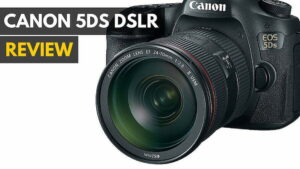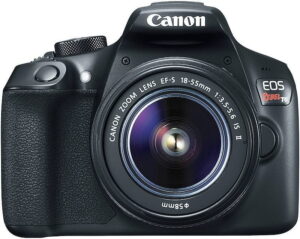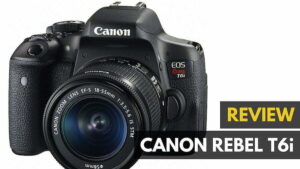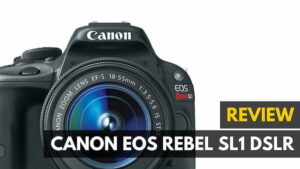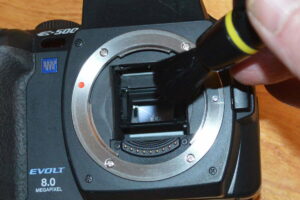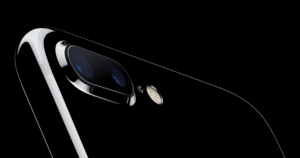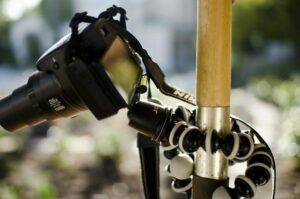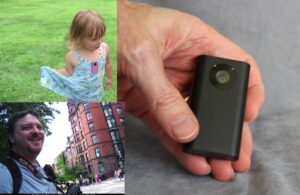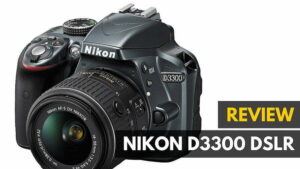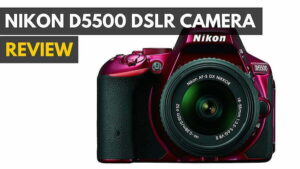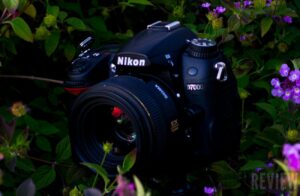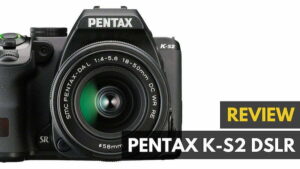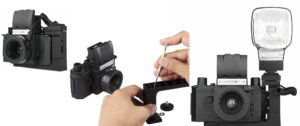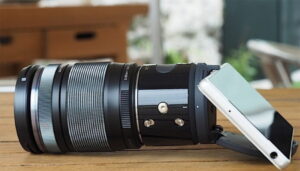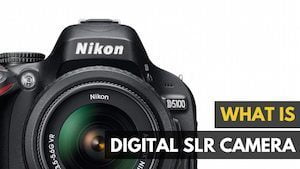Simply put, this Nikon D810 DSLR review unveils one of the best non-professional-level DSLR cameras on the market today. It offers a host of great features, making it a flexible model that photographers of varying skill levels can use successfully. If you’d like a 3D camera instead, you should also read our Poppy 3D camera review. The D810 carries a price that will push it out of the budget of many photographers, unfortunately.
But the ability to fully customize the camera’s settings and features gives this model a leg up versus other advanced DSLR cameras. That’s why we’ve put this Nikon D810 review together! To explain in detail exactly what this model has to offer. If you’re not quite ready to take the plunge into DSLR, take a look at our LyfeShot Blynk Time Lapse review for a good starter camera. If you need a bag for your camera, check out our page from when you could win a camera case; the Logic DCB-308 SLR camera sling bag.
Also, check out the best DSLR camera.
Overview
Summary: One of the strongest prosumer DSLR cameras on the market, provides tremendous image quality and sturdy build quality.
WHY IT’S A TOP PICK: Best image quality you’ll find in a consumer-level DSLR
Price: $3,296 (w/ lens)
Available: June 2014
What We Liked
- Tremendous image quality in the full-frame image sensor
- Extremely fast performance and responsiveness
- Sharp images with strong autofocus or manual focus functions
- Easy to customize to meet your skill level and needs
What We Didn’t
- Heavy camera that may wear you out after a few hours of lugging it around
- Very high price
- No extra features like built-in Wi-Fi or an articulated LCD screen
Nikon D810 DSLR Specs
| Image Sensor Type | CMOSfull-frame sensor (35.9×24 mm) |
| Megapixel | 36.3 |
| RAW Capable | |
| Articulating Screen | |
| HD Video | |
| ISO | 64-12,800 (expandable to 51,200) |
| Auto Focus Points | 51 |
| Avg Battery Life | 1200 Photos |
| Weight | 31oz |
| Size | 5.8 x 4.9 x 3.3 inches |
| Price | $3,296 (w/ lens) |
| Buy |
Design and Build
For those who are frustrated with shooting photos while trying to awkwardly hold a tiny point-and-shoot camera or a smartphone camera, the Nikon D810 is a revelation, just like the Nikon Z50. The right-hand grip is a perfect size, making it easy to hold the D810 comfortably. And most of the camera’s buttons are easy to reach while holding the DSLR camera normally. I do have to mention here that Nikon adjusted the button and control layout from what it had with this camera’s predecessor — the D800 — which may frustrate some users migrating to the D810 from the older model. I thought the button layout was good with the D810, but those who are used to the D800’s button layout may not agree.
This model is a heavy camera, like the Blackmagic Pocket 4K Cinema Camera, weighing nearly 2 pounds without the lens attached. But Nikon’s designers did a good job designing the D810, distributing the weight evenly, and making the camera well balanced. However, I would recommend having a neck strap attached to this model if you’re going to use it for a full day of photography, as the D810 DSLR is heavy enough that it will wear out your arms after a few hours of carrying it around.
Related: If you prefer a lighter or smaller camera, don’t miss our Nikon D3300 review.
As with most DSLR cameras, the Nikon D810’s performance speeds are very good when you’re using the camera’s viewfinder to frame photos, but the performance levels slow if you’re framing scenes using the display screen. When shooting with the viewfinder, you can record images at speeds up to 5 frames per second at full resolution, which is a good performance versus other DSLRs, but not a top-end performance level. There is no noticeable shutter lag with this camera, and shot-to-shot delays are minimal. You won’t miss many spontaneous photos waiting for this model to start up either, as it can record its first photo about 1 second after you activate the power switch.
Another benefit to shooting in viewfinder mode is that you’ll conserve battery power versus using the display screen to frame the scene. When shooting primarily with the viewfinder, you should be able to shoot photos for several hours on a single battery charge, which is a great performance level.
Related: Prefer to keep shooting without worrying too much about the battery, then you need a camera with long-lasting battery life. See our Nikon D780 review for more information.
Nikon also gave the D810 a pair of memory card slots, one for CF cards and one for SD cards. CF cards offer higher performance levels than SD cards, which will appeal to advanced photographers, so this dual memory card slot option is another example of how the D810 features can keep up with you as your photography skills improve.
The display screen is of high quality, measuring in above average 3.2 inches diagonally and offering more than 1.2 million pixels of resolution. It’s unfortunate Nikon chose not to make this display screen touchscreen-enabled or articulated. Surprisingly for a camera in this price range, the D810 also does not offer built-in Wi-Fi connectivity.
Keep in mind that the Nikon D810’s high price isn’t the only cost you’ll encounter with this model. You must purchase interchangeable lenses to use with the D810, as you need to do with all DSLR cameras. Nikon has dozens of interchangeable lenses available for the D810’s F lens mount, which means you’ll have no problem finding the right lens to do the job you want in any particular photography session. A couple of lenses to consider are the Nikon 50mm F 1.4G, the Nikon 24-70mm F 2.8E VR, and the Nikon 16-35mm F 4 VR. Remember, you’ll just have to budget for extra lenses with this or any other DSLR camera.
Image Quality
Nikon labels the D810 as a prosumer camera, meaning it fits in the market between professional DSLR models and consumer DSLR models. And the D810’s image quality allows it to dominate this prosumer market, as its full-frame FX image sensor (measuring 35.9 x 24 mm or 1.41 x 0.94 inches) creates photos of amazing quality. The large image sensor easily carries this camera’s 36.3 megapixels of resolution.
With the Nikon D810, you can shoot in JPEG, RAW, or TIFF image formats, which contributes to this camera’s flexibility. The buffer memory can accommodate 17 RAW files or 56 JPEGS with the maximum quality settings. And Nikon’s designers didn’t forget about video features with this impressive camera, providing full HD video at up to 60 frames per second. The D810 does not, however, offer 4K video resolution.
The D810 creates extremely sharp images, whether you’re working with the easy-to-use manual focus option or the camera’s accurate 51-point autofocus option. Nikon removed the anti-aliasing filter from the image sensor on this model, allowing it to create sharper images than older DSLR cameras. (With improvements in image sensor technology in the past several years, anti-aliasing filters aren’t needed as often as they used to be.)
On top of that, the D810 is one of the first modern DSLR cameras that allows going below ISO 50. This is made possible by lowering the base ISO of the D810 from ISO 100 to ISO 64. This reduction of roughly 2/3 stop in ISO allows the camera to gather 2/3 stop more light, and provide a smoother, less noisy image. Plus the Auto ISO sensitivity control lets the camera adjust the ISO sensitivity automatically if optimal exposure cannot be achieved at the value selected by the user.
Wrap Up
If you have a few thousand dollars available for your DSLR camera purchase, the Nikon D810 is easily the model on the market right now that I’d recommend. Its image quality stands out, even against other consumer- and prosumer-level DSLRs, which isn’t easy to do. The D810 is a flexible model with an impressive dynamic range at ISO 64, giving advanced photographers the ability to customize the settings and features to meet their needs. Less experienced photographers will have the ability to use this model successfully right out of the box, yet it also will meet their needs with plenty of manual control options as their skills improve.
Related Articles:
![10 Best Binocular Cameras in [year] 1 best binocular camera](https://www.gadgetreview.dev/wp-content/uploads/best-binocular-camera-image-300x200.jpg)
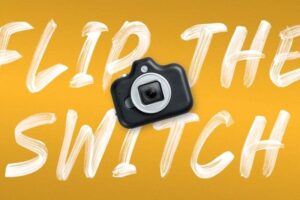
![Best Canon DSLR in [year] ([month] Reviews) 3 The top Canon DSLR cameras.||Intermediate and entry-level photographers will appreciate this mid-level DSLR offering from Canon](https://www.gadgetreview.dev/wp-content/uploads/best-canon-dslr-300x165.jpg)

![Best DSLR Camera for Beginners in [year] 5 Top DSLR Camera for Beginners|The Canon T6i DSLR offers many features for beginners.|The Nikon D3300 DSLR offers plenty of resolution for someone new to DSLR photography.|An articulated LCD](https://www.gadgetreview.dev/wp-content/uploads/best-dslr-camera-beginners-featured.jpeg)
